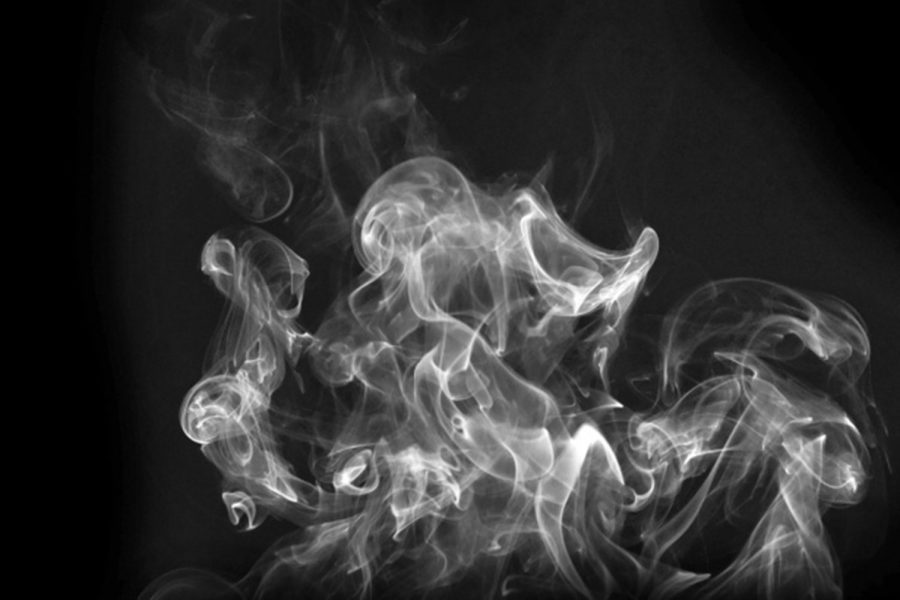Dabbing with Death
Vaping with THC likely cause of recent deaths
Smoke blows, similar to the smoke that comes from dab pens.
Addiction. We are addicted. Addicted to convenience. To people. To feelings. In a country where mental illness, reckless substance abuse, and a “need to please” attitude are all growing exponentially, too many teens are turning to addictive alternatives to cope. And now, as the 33 dead would give anything to be able to testify, the consequences are catching up to us.
Dab pens are a form of vape pen used by teenagers at an unfortunately high rate. For marijuana-smoking students, like Skylar Stone*, many started using them because their friends were and there was an opportunity that they took without considering the consequences. This reckless decision has proved disastrous for some.
“Someone just offered me one and I did it,” Stone recalled.
Though they may be past their peak in popularity, dab pens are still a very relevant issue that demands to be discussed. A quick glance at local or national news, reveals that 33 people have died in recent months as a direct result of vaping. Further, vaping tetrahydrocannabinol (THC) is almost certainly to blame for taking the aforementioned lives.
To preface, dab pens are like any other vape pen in look and function, however, they run off of cartridges (carts) of “dab,” or an oil containing THC. And while there are some liquid forms of THC for regular vape pens, dab pens are most common among those seeking a high. Dab pens, in short, are a digital form of marijuana, but are so much worse.
The major problem, aside from breathing in foreign substances, lies in the contents of the carts. The drug sales industry is infamous for its fraudulent producers and products. Especially in a state where recreational marijuana is not legalized, buying carts is a risky business. School Resource Officer, Officer Troy Inserra, spent years as an undercover cop and knows better than anyone how careful one needs to be when buying drugs. He expressed his immense concerns with the use of dab pens.
“It’s dangerous… I tell anyone who’s doing it, ‘You need to stop,’” Officer Inserra said.
One branch of the issue is the chemicals in these dabs. The contents of many popular vendors’ carts alongside the products used by hospitalized patients have been closely examined and tested positively for both pesticides and vitamin E acetate.
Pesticides are not meant to be inhaled. They are meant to kill weeds, however, through careless purchases and reckless abuse, they are killing humans.
Vitamin E acetate is an oil derived from vitamin E. At high temperatures, the oil becomes a vapor, but when exposed to cooler temperatures inside of the lungs, it reverts to the oil state. The fatty droplets now trapped inside patients’ lungs can lead to many lung diseases including, but not limited to lipoid pneumonitis and acute respiratory distress syndrome (ARDS).
Another part of the issue is people selling carts that aren’t what they claim. “Trusted” brand names, take for example the popular provider Dank Vapes, have no face; they lack regulation. This causes the sale and purchase of carts to be just as risky as any other illegal drug. Dealers can simply refill used cartridges with any mixture of substances and proceed to sell it under the trusted name to fool the consumer. This is where not only the pesticides and vitamin E acetate come into play, but the coach takes many other impossible-to-pronounce chemicals off the bench to join. And these chemicals definitely play games with user’s lungs.
“I always tell kids: ‘you never know who you’re buying from,’” Officer Inserra explained.
With all of these negatives and risks, it may be a little confusing why dab pens are still used. The appeal is actually relatively easy to understand. Student Jasper Jones* explains it perfectly.
“Nothing really stands out [about dab pens] except that it’s more convenient… You can do it wherever,” Jones claimed.
*The use of asterisks next to the names of sources in this article indicate the use of a pseudonym for the protection of our sources anonymity.
Your donation will support the student journalists of Francis Howell Central High School. Your contribution will allow us to purchase equipment and cover our annual website hosting costs. FHCToday.com and our subsequent publications are dedicated to the students by the students. We hope you consider donating to allow us to continue our mission of a connected and well-informed student body.








